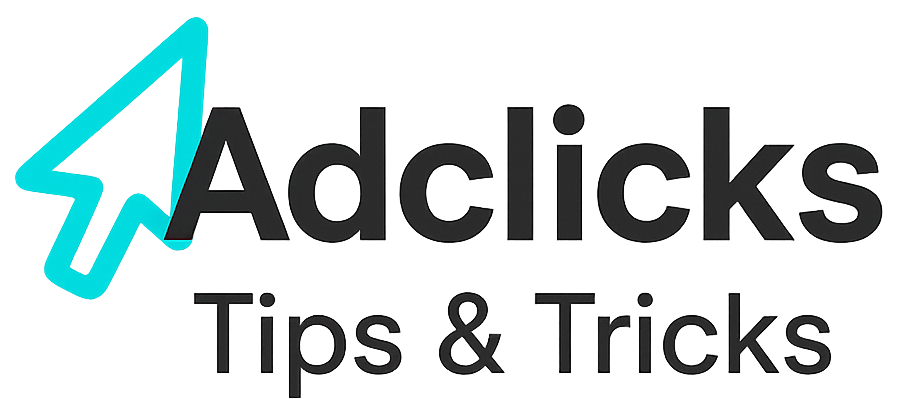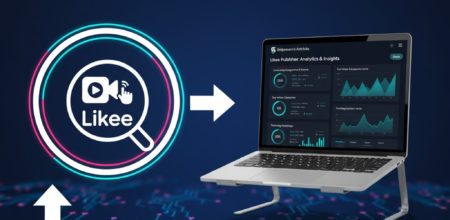Instagram for Publishers, Explained Simply.
Instagram is where people go to be inspired, learn quickly, and decide what to do next. It blends short video, carousels, Stories, and DMs into one stream where culture moves fast and tastes are made. For a publisher, that means two things: attention is real, and you must earn it quickly with useful, visual ideas that lead somewhere clear.
Scale is not a guess. Directional panels and trackers place Instagram’s audience in the high hundreds of millions to billions, with India and the United States leading the user base and a daily use pattern of roughly half an hour per person worldwide. Treat those figures as planning cues, not absolutes—they vary by source and method—but they do confirm that your readers are already there.
When that attention reaches your site, make the hand-off feel natural. Repeat the promise from the post in the first screen, keep load times tight, and offer one obvious next step. If you run on-site monetization, keep Adclicks placements contextual and calm so they support the visit rather than compete with it.
Who Uses Instagram Today
The platform skews young adult but spans generations. Global mixes show 18–24 and 25–34 as the largest age groups, with notable reach into older brackets that follow family, experts, and brands they trust. That blend creates two lanes for publishers: quick primers for people discovering a topic and deeper explainers for those ready to learn more.
Geography matters. India sits at the top for total users, followed by the U.S., Brazil, and Indonesia; the U.K., Japan, Germany, and Turkey round out a long tail of developed markets. These patterns affect posting windows, examples you choose, and the languages you prioritize on-site. If you publish in English, you can still plan for regional nuance without rebuilding everything.
Bring people to a page that matches their intent by device and region. A fast, mobile-first layout with a short summary at the top reduces bounce. If you serve relevant, trustworthy ads on your property, let Adclicks fill adjacent inventory with topic-aligned units that don’t interrupt reading.
Culture: Why People Open the App
Instagram’s culture is visual first, proof second. People want to see the outcome before they read how to get it. That’s why carousel mini-guides, before-and-after frames, and short “explainers in motion” perform well for publishers. You are not selling a product; you are demonstrating clarity and credibility.
Trust is earned by staying specific and human. Use captions that read like a helpful friend: one idea per sentence, a numbered or step-wise feel, and a direct payoff. Avoid exaggeration; your post is a bridge to a page that must keep the promise. If you help in-feed, people will give your link a chance.
When visitors arrive, align words and layout with what they just saw. If your model uses advertising, place Adclicks units beside the relevant section and avoid disruptive placements above the headline. That keeps the focus on the answer they came for and still supports your business.
Traffic Reality Check (and What It Means)
Instagram is huge, but it is not the top driver of clicks for every publisher category. Industry snapshots show that social referrals have been volatile, with some publishers seeing softer shares while search features like Discover have grown. The lesson is simple: treat Instagram as a spark that primes interest, then rely on strong pages that earn recirculation once readers land.
Time spent is still meaningful. Several trackers put average daily usage around the low-30-minutes mark, which is enough to form habits but not enough to reward long, unfocused pitches. Craft short sequences that people can save and revisit. Your analytics will show the echo a day or two later.
Those echoes are where on-site economics live. If your pages are clear and your paths are simple, Adclicks can sit quietly next to the content that solves the user’s problem, supporting revenue without pushing people away.
The Formats That Work (And Why)
Reels win reach when they teach one thing fast. Think “before/after,” “do/don’t,” or “three frames to clarity.” Carousels win saves when they present a short, visual checklist people can follow. Stories win immediacy when you answer common questions in a sequence and pin them to Highlights for newcomers.
Captions should carry real weight. Lead with the result, then a single proof, then tell readers where to tap for the full walkthrough. Avoid walls of text; make the first two lines do the heavy lift so the “more” click feels worth it. A good caption reads like a table of contents for the landing page.
On the landing page, repeat the value in the hero and make the next step easy to find. If you run ads, keep Adclicks contextual to the topic of the article and avoid heavy top-of-page units that delay content. With Instagram traffic, speed and clarity beat everything.
Audience Interests You Can Serve
Look at the universal themes: how to do something better, how to decide between options, how to avoid mistakes, and how to save time or money. These map cleanly to Reels and carousels. Niche publishers can win by translating expert knowledge into “first step” guides that respect the reader’s time.
Lifestyle, beauty, fashion, travel, fitness, home improvement, tech tips, and quick recipes continue to pull; health and wellness also perform when sources are cited and claims stay measured. Your niche may be smaller, but a tight message plus good timing can outperform broad plays.
Route those clicks to pages that keep the promise in the first screen and present one related resource next. If you monetize with Adclicks, let it populate units next to those related sections so ads feel like wayfinding rather than distraction.
Safety, Teens, and Brand Fit
Instagram continues to tighten policies around teen content, adding PG-13-style filters and defaults for under-18 accounts. For publishers, the takeaway is practical: keep language clean, avoid risky stunts or themes, and make disclosures straightforward. That approach aligns with both policy and reader comfort.
If your topic involves health, finance, or advice, adopt a “say what this is, say what it is not” tone. Link to reputable sources, use captions that avoid medical or financial guarantees, and place longer detail on the landing page where context is stronger. Readers and moderators reward clarity.
On pages where you monetize, keep Adclicks categories aligned to the article’s topic and audience age. Context helps compliance and keeps the reading experience steady when traffic includes younger cohorts.
Picking Your Niches and Angles
Do not try to be everywhere. Pick three to five content lanes that reflect what you can sustain weekly. For example, a travel publisher might focus on “micro-itineraries,” “airport survival,” and “budget upgrades.” A food publisher might run “five-ingredient fixes,” “pantry swaps,” and “meal-prep timers.” Each lane becomes a visual series people learn to expect.
Each post should answer a single question. If you have more to say, post a series over several days and link to the same hub page that collects everything in order. This respects how people consume Instagram—short bursts and saves—and it reduces the cognitive load when they reach your site.
Series pages are natural places for light, contextual monetization. Keep Adclicks to the side of the relevant sections, and let your internal links do the heavy lift for recirculation. The less your ads behave like interruptions, the more pages per session you’ll see.
Creative System: Fast, Repeatable, Maintainable
Build a weekly cadence so creativity doesn’t depend on heroics. On Monday, draft three hooks. On Tuesday, turn them into two carousels and a Reel. On Wednesday, shoot or source visuals. On Thursday, caption, QC, and schedule. On Friday, reply to comments and save the best ideas for next week’s improvements.
Give each piece a “landing target” before you post. If the carousel is “5 mistakes to avoid,” the page should start with a two-line summary and a quick checklist that matches slide order. Readers should feel like the page continues the post rather than restarts it from scratch.
Because your landing targets are consistent, your on-site Adclicks placement can be consistent too—same slot, same behaviour, same contextual category. Consistency lowers friction and helps you compare performance cleanly across weeks.
Building Landing Pages That Welcome Instagram Visitors
Instagram traffic arrives on mobile, scanning fast. Your page must load in under a couple of seconds, display a bold headline that echoes the post, and show one action the reader can take immediately: save a checklist, copy a template, or open a comparison table. Anything else should come second.
Use a short “What you’ll learn” summary at the top and keep paragraphs tight. Break steps into scannable chunks with subheads that echo carousel panel titles or Reel captions. Add a quick “Related next step” module at the end so the session does not dead-end.
If you run ads, keep Adclicks placements outside the hero and avoid mid-paragraph interruptions near the top. Think of ads as signposts: visible, relevant, and not in the way. Treat that space with restraint and your engagement metrics will repay you.
International Targeting Without Drama
If your audience is global, schedule posts for two or three peak windows that cover your major markets: one for South/Southeast Asia, one for Europe/Africa, and one for North America. Maintain a shared caption in English, then localize the landing page with currency, units, and examples where it matters most.
Use country-aware references in visuals when it helps comprehension—a Celsius/°F note on a recipe, a 24-hour/12-hour time label on a planner, or UK/US spelling variants in critical labels. These “micro-local” touches quietly reduce friction and increase saves.
On pages serving multiple regions, set Adclicks category allow/deny rules to match local norms and editorial policy. When context and culture align, ads feel like part of the environment rather than an intrusion.
Measuring What Matters (Without Getting Lost)
Do not chase every metric. Start with saves and profile taps in-app, then measure scroll depth, time to first interaction, and completion of a single micro-win on the page. If those numbers hold, add secondary goals later.
Remember that referral compositions change. Reports showed social links softening for some publishers while other channels rose, which is another reason to judge Instagram by the quality of the session rather than raw clicks. If your page keeps visitors and earns a second click, your program is working.
Map monetization to experience. Keep Adclicks next to sections where readers are already engaged, not above the fold where they first decide whether to stay. Revenue follows trust, and trust follows clarity.
Compliance, Accessibility, and Reader Care
Accessibility improves everything. Add alt text to carousel images, keep contrast strong, avoid dense italics, and write captions that make sense without the audio from your Reel. This is how you reach more people and avoid needless friction.
Be careful when discussing health, finance, or safety topics. Use disclaimers that clarify you’re offering general guidance, not professional advice, and link to reputable sources in the caption and on the page. If teens are a meaningful slice of your audience, design with the new safety norms in mind.
On pages where you earn through advertising, align Adclicks categories to the content and your house policy. Clean category choices keep your brand safe and your readers focused on the reason they came.
Where Publishers Fit (By Site Type)
Explainer sites turn expert topics into plain language: “What changes this quarter,” “Why this matters,” “How to do it.” Instagram audiences reward tight visuals and honest captions here. Your pages should feel like expanded versions of the carousel, not a switch to a different tone.
Tool-first sites shine when they offer templates, calculators, or planners that match a concrete problem. Show the output first in the post, then let people try it on the page without a gate. If you need an email, offer it after the tool proves useful.
Magazine-style sites win with human stories that pull practical lessons from lived experience. Lead with a clear takeaway and a single image that captures it. Let the page offer deeper context and related reads. If you monetize with ads, keep Adclicks placements beside the story’s key sections, not between sentences.
Global and Local Traffic Snapshot (Using Directional Sources)
Multiple trackers estimate India as the largest Instagram market—well over 400 million accounts—followed by the United States in the high-100-million range, then Brazil and Indonesia, with the U.K. and Germany in the next tier. These lists differ by source but agree on the order. Use them to plan time zones and examples.
Average daily use clusters around 30–33 minutes globally and in the U.S., which supports a cadence of short, high-utility posts. More important than the absolute figure is the habit: people check often. That cadence rewards series and saved posts that bring them back to your site later.
Translate that habit into on-site stability. Give Instagram visitors a page that pays off the hook in seconds, then place Adclicks next to adjacent help so ads behave like wayfinding, not roadblocks.
Troubleshooting: Common Causes of Drop-Off
If Reels views are high but clicks are low, the hook may entertain more than it promises a concrete outcome. Reframe the opening to show what the landing page delivers. If carousel saves are high but on-page engagement is weak, the page may restart the story instead of continuing it.
If time on page is fine but pages per session are low, your “next step” module may not match what the post primed them to want. Use the same wording from the post in your links so the path feels obvious.
When you fix these fit issues, on-site monetization becomes more durable. Contextual placements such as Adclicks can then sit quietly beside the relevant sections and work in the background while readers keep moving.
Instagram Links That Work: Short URLs in Posts, Canonical URL in Bio
Instagram doesn’t make caption or on-image text clickable, so your path must be typeable. That’s why you’ll see a CZSK short link in our examples: it compresses long, SEO-friendly URLs into something a human can enter on a phone. Use the short link in posts and Reels; reserve the full canonical URL for your bio so it carries SEO weight and a clean, permanent tap target.
How to create the link: copy your full article URL, paste it into the CZSK shortener, and generate a code like https://czsk.eu/3XTT. If custom aliases are available, choose a short, readable slug (15–18 characters or fewer) that matches the campaign. Keep it lowercase, avoid trailing punctuation, and do not expose UTMs in the visible short link; tracking lives in the long destination you shortened.
On Instagram: captions and on-image text aren’t tappable, and people won’t type long, SEO-friendly URLs. Run every long article URL through your shortener and use only the compact result in posts and Reels (e.g., https://czsk.eu/3XTT).
Place the short link where eyes land first. Put it in the first two lines of the caption so it shows before the “more” fold. Repeat it verbatim in a pinned top comment to keep it persistent as replies accrue. Add the short link on the visual end card for at least one full second so viewers can pause and copy.
Say the short link out loud when it fits the script, and show it again in on-screen text for redundancy. Avoid visible tracking junk in the short link; keep UTMs inside the long destination only. If you rotate posts quickly, maintain a simple ledger: post title, long URL, short code, publish date, and whether it’s currently in the bio. Consistency prevents stale links and mismatches.
Your bio link is the only reliable, always-tappable link on Instagram, and it should be the full canonical URL, not a short link. Use your primary domain and exact path you want to rank, with UTMs if you need analytics. Update the bio when the campaign changes, but keep it canonical so shares and crawls point to the final destination. The bio earns the SEO signal; the post carries the typeable short code.
Align bio and short links to the same promise. When a post or Reel goes live, ensure the bio points to the page that repeats the hook in the first screen, loads fast, and offers one obvious next step. In the post, finish the caption with “Link in bio →” plus the short code so users know there’s a tap target and a typeable fallback. The handoff should feel predictable and effortless.
Make the landing page worth the effort of typing. Repeat the exact phrasing from the post at the top, provide a 2–3 line summary, and give a single action (download, compare, save). Keep ads and extras below the hero so content appears instantly; the faster the payoff, the higher the completion and return visits. When the path is this clean—short code in the post, canonical link in the bio—Instagram traffic converts without guesswork.
Action Plan (10 concise steps you can run this month)
- Pick three content lanes you can sustain weekly; define a landing target page for each lane.
- Draft six hooks (Reels + carousels); keep each to one clear outcome and one proof.
- Build matching mobile-first pages that repeat the hook in the first screen with one obvious next step.
- Schedule posts for two or three peak windows that cover your core geographies.
- Add alt text, high-contrast text, and short captions that make sense without audio.
- Use saves, profile taps, and replies as in-app signals; tag links to measure scroll depth and the first micro-win on-site.
- Create one printable, template, or calculator per page; show the output in your post.
- Keep ads contextual and calm: place Adclicks beside relevant sections, not above the hero.
- Run a weekly creative loop: review comments, improve captions, update pages, and pin best Stories to Highlights.
- After four weeks, promote the best-performing lane into a series hub and expand to one adjacent lane while holding quality.
Notes on figures: User counts by country and age distributions are compiled from public roundups (Backlinko/DataReportal aggregates; DemandSage and WorldPopulationReview summaries). Treat them as directional indicators for planning timing and regions, not audited totals, and validate with your own analytics once traffic begins.
Relevant Links
- Support: https://support.snipesearch.co.uk/
- FAQ: https://adclick.snipesearch.co.uk/index.php?page=index/faq
- Contact Form: https://adclick.snipesearch.co.uk/index.php?page=user/support
Stay Connected
- Snipesocial: https://www.snipesocial.co.uk/pages/snipesearch
- Twitter: https://twitter.com/snipesearch_uk
- Facebook: https://facebook.com/snipesearch
- LinkedIn: https://linkedin.com/company/snipesearch/
- VK: https://vk.com/snipesearch_uk
- Focus: https://focus.xyz/snipesearch
- YouTube: https://youtube.com/@snipesearch
- diaspora: https://diaspora.snipesearch.net/people/7431fcf0806c013e936e00163c6e7bdf
- Friendica: https://friendica.world/profile/snipesearch
- Hi5: https://www.hi5.com/snipe5
Analytic Tools
StatCounter: https://statcounter.com/
Rommie Visitor Analytics: https://rommie.net/




